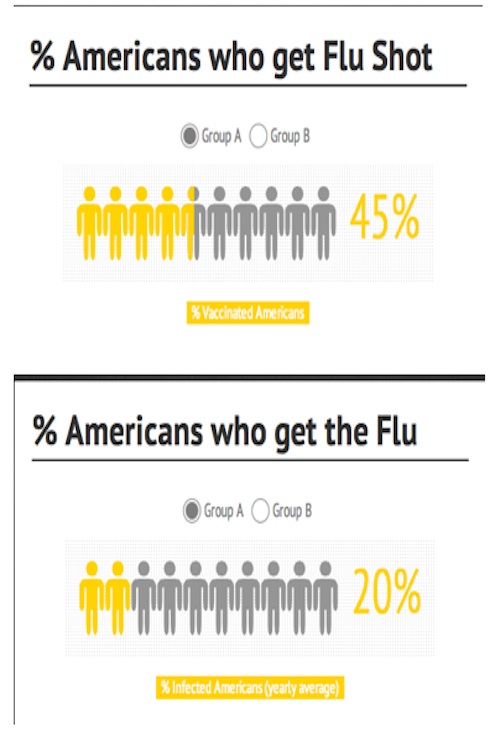The leaves are starting to change color, the temperatures are dropping, and the days are getting shorter. It’s October. And you know what that means – it’s flu season.
The Centers for Disease Control and Prevention says that “seasonal flu season” can begin as early as October and last as late as May. I don’t know about you, but I want to make the next eight months as influenza-free as possible.
You can shut yourself up at home in the hope of eliminating all encounters with potentially affected humankind. But the most effective form of protection against the flu is the seasonal flu vaccine, which can be delivered in the form of an injection, or through a nasal spray.
Many can attest that being jabbed in the arm with a needle or having a syringe shoved up one’s nostril are not the most pleasurable of experiences. And most of us know people who get vaccinated but still come down with the flu.
Is getting the flu shot even worth it?
According to the CDC, the flu vaccine’s effectiveness depends on the characteristics of the person being vaccinated and how far into flu season one gets the vaccination. It also depends on the similarity between the flu viruses it is designed to protect against and the flu virus that is spreading in the community.
The vaccine generally is more effective among healthy children and adults. However, there is no guarantee that the flu shot will prevent people from coming down with the virus.
At best, the flu is downright unpleasant, causing its victims to miss a few days of school and go through a few boxes of tissues. At worst, the flu can be deadly. The CDC disclosed that in the 2012-13 flu season, there were 164 reported flu-associated pediatric deaths.
Recent studies show that the vaccine can reduce the risk of flu illness by 60% among the population, depending on the strain of the virus. 60% is better than nothing, but those of us who tend to shy away from needles could very well use this statistic as an excuse to avoid the trip to the doctor’s office.
On the other hand, it is better to be safe than sorry.
Dr. Nikki Gorman of Westport’s Village Pediatrics says that she and her colleagues recommend everyone be vaccinated, especially because the creation of the flu mist has made the process less painful and more convenient.
“We like to make the comparison to wearing a seatbelt,” said Gorman. “They’re never going to protect you 100%, but it’s our best way to try to prevent getting hurt in a car accident.”
When it really comes down to it, how big of a sacrifice is it to spend ten minutes (not including mental prep time) getting vaccinated?
Those wary of shots can opt for the painless flu mist, and the brave souls who face the flinch-worthy injection will leave with a colorful Band-Aid, maybe even some fun stickers, and the peace of mind that comes with having taken every possible precaution against the dreaded flu.
FLU MIST:
The FluMist is a nasal-spray flu vaccine that protects against the influenza viruses in eligible children and adults between the ages of 2 and 49. This quadrivalent spray protects against the same four flu strains included in the vaccine, and is much less painful than an injection. Research has shown that in young children, the flu mist may even offer better protection against the flu than the traditional flu shot does. On the other hand, it may not be right for everyone — there are many more restrictions on who can get the flu mist.















































